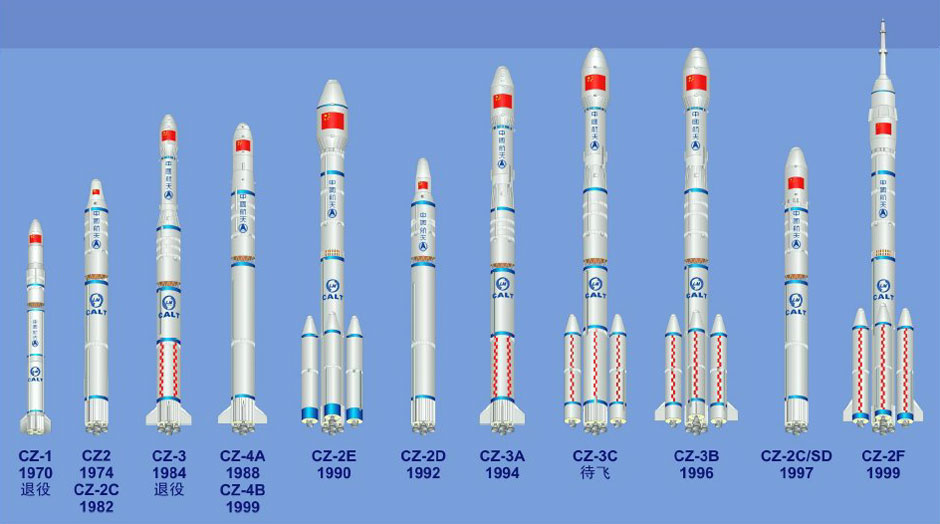28.11.2021

Continuing a recent streak, Friday saw the fourth successful orbital launch from China in one week. This time, the Zhongxing-1D (ChinaSat-1D) satellite was inserted into orbit by a Chang Zheng 3B rocket launched from the Xichang Satellite Launch Center.
The ChinaSat (Zhongxing) series of satellites, built by the state-owned China Aerospace Science and Technology Corporation (CASC), fall under the communications category. The ChinaSat-1 series is specifically designed for military communications, with the first of this type launched in 2011.
Two types of military communications satellites are used, with Friday’s launch exhibiting the Feng Huo-2, used for tactical communications providing Chinese forces with secure data and voice transmission via C-band and UHF. The ChinaSat-2 series uses the other military communications type, Shentong, of similar purpose but via Ku-band.

ChinaSat-1D, and commonplace with the ChinaSat series in general, uses the DFH-4 satellite bus providing onboard power and propulsion systems amounting to a 10-15 year nominal lifespan. ChinaSat-1D was successfully inserted into Geostationary Transfer Orbit, where it will now utilize its own onboard propulsion to raise its perigee into a circular Geostationary Orbit, where it will remain for its foreseeable service life.
Multiple ChinaSat satellites have been built, launched, and are operational already, with the most recent launch being of ChinaSat-9B in September 2021, not of military purpose but instead providing high-resolution television and radio broadcasting. With ChinaSat-6D (similar to -9B) rumored to be launching soon, China is pushing for increased domestic connectivity, and the country has commissioned these more advanced communication satellites for the Chinese population to meet current and future demand. An upcoming hallmark of this progress will be the 2022 Beijing Winter Olympics, with ChinaSat set to allow for 8K resolution broadcasting.
Friday’s liftoff occurred at 16:40 UTC from Launch Complex 2 at the Xichang Satellite Launch Center, one of the facility’s two operating pads hosting Geostationary-bound missions via Chang Zheng 2 and Chang Zheng 3. Operational since 1984, Friday’s launch marked Xichang’s 14th of this year alone.
As used on this mission and with many Chinese Geostationary-bound missions, the Chang Zheng 3B (internationally-known as the Long March 3B) is a medium-lift launch vehicle manufactured by the China Academy of Launch Vehicle Technology. Fueled by liquid propellants, the CZ-3B comprises of three stages (with an optional fourth), including four strap-on boosters with the first stage, amounting to a 11,200 kg lifting capability to Low Earth Orbit and 5,100 kg to Geostationary Transfer Orbit.
While the vehicle is heavily based upon the Chang Zheng 3A, the Long March 3 has undergone adaptations during its service life with the addition of strap-on boosters and as such, the 3B (four strap-on boosters) and 3C variant (two strap-on boosters) were born.

The Chang Zheng (Long March) family of vehicles – via CNSA
Both the 3B and 3C variants have undergone even further development, designated as being ‘enhanced’ and reflected as such by Long March 3B/E and Long March 3C/E, respectively. Such development involved stretching the length of the strap-on boosters and first stage, leading to longer-duration burn times in the aforementioned components and an increased payload capacity over the base variants.
With such upgrades it is commonplace that enhanced variants are henceforth used, and therefore Friday’s CZ-3B/E has the increased capability to loft up to 5,500 kg to Geostationary Transfer Orbit. The ChinaSat series of satellites have an approximate mass of 5,000 to 5,500 kg, varying with their level of equipment/purpose and generation.
Significantly, Friday’s launch also exhibited an upgrade of the CZ-3B with a “wind compensation” system to allow for higher wind tolerance and thus better resilience to launch conditions.
The majority of the Long March 3’s stages use hypergolic propellants, specifically unsymmetrical dimethylhydrazine (UDMH) and nitrogen tetroxide (N2O4), both of which provide easy combustion but are toxic. Due to the location of some Chinese launch facilities deep inland, spent stages with toxic fumes can fall near populated areas, prompting international criticism for such risk.
Following the standard flight timeline of a CZ-3B GTO mission, the boosters are jettisoned at approximately T+ 2 minutes and 8 seconds from the first stage. Meanwhile, the first stage and its four YF-21 engines, also utilizing the same hypergolic propellants, burns until two minutes and 25 seconds before second stage separation.
The second, another hypergolic stage, ignites its single YF-22E main engine to burn until T+ 5 minutes and 26 seconds, with the stage’s YF-23 Vernier engine shutting down 15 seconds later. Fairing separation occurs approximately three and a half minutes into the flight.
After the second stage shuts down and separates, the third stage ignites its two YF-75 engines fueled by liquid hydrogen and liquid oxygen, the only cryogenic stage of the vehicle. This stage burns for approximately four minutes and 44 seconds in order to reach near-orbital parameters.
A second burn to raise the perigee is initiated at around T+ 21 minutes, following a coast phase. As well as performing an orbital insertion, this 179-second burn then significantly raises the apogee to the parameters needed for a Geostationary Transfer Orbit.
Spacecraft separation from the third stage occurs at approximately T+ 25 minutes. With this launch being the fourth in a streak of just one week, China is continuing to extend its lead in the worldwide number of orbital launches this year.
Quelle: NS
